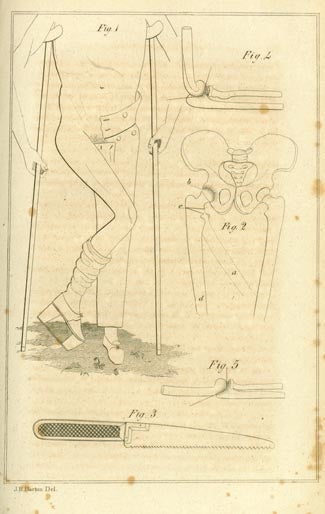
On the treatment of anchylosis, by the formation of artificial joints
Publisher Information: 1827.
First Successful Artificial Joint
Barton, John Rhea (1794-1871). On the treatment of anchylosis, by the formation of artificial joints. In North American Medical and Surgical Journal 3 (1827): 279-292; plate. Whole volume, 8vo. vii, [1], [v]-vi, 432pp. 2 plates. 210 x 133 mm. 19th century half calf, marbled boards, leather spine label. Fine apart from occasional light foxing. From the Svenska Läkaresällskapets Bibliotek, with the library's 19th century stamp on the title.
First Edition. Barton, a Philadelphia surgeon, was the first to create an artificial joint as a remedy for ankylosis (solid fusion of a joint). "His conception of an operation to restore motion to a fused hip joint was brilliant. His patient was a twenty-one-year-old sailor who had been injured in a fall on shipboard in which he sustained an injury to the right hip. The hip became stiff in a position of flexion and adduction. Barton reasoned that if he divided the bone and persisted in moving the osteotomy site during the convalescent period that a pseudoarthrosis [false joint] would develop, the ends of the bond becoming covered with fibrocartilage and held together by a fibrous capsule. This complication of diaphyseal fractures was well known to the surgeons of the day" (Peltier. p. 245). The success of Barton's operation paved the way for the use of osteotomy to correct joint deformities and preserve joint motion, eventually leading to modern artificial joint surgery. Peltier, Orthopedics, pp. 245-46. Garrison-Morton 4451.
Book Id: 40849Price: $2,500.00
